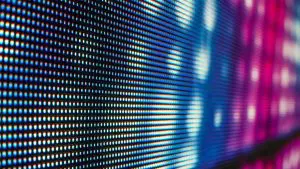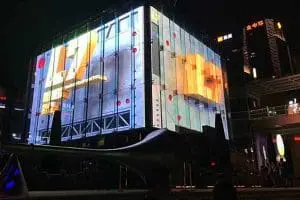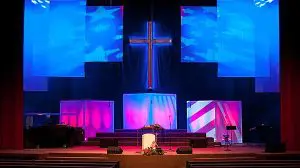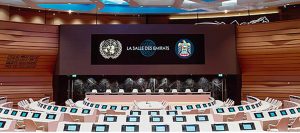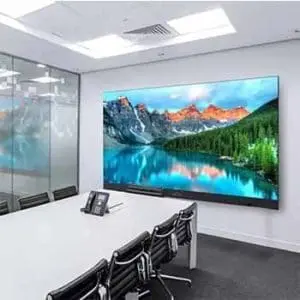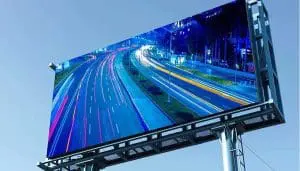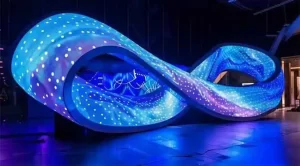Whether you’re upgrading your retail signage, planning a massive stadium installation, or launching a tech-forward stage production, one question always comes first: How much does an LED screen cost? The answer is more complex than just size or resolution—it’s a combination of components, technology, compliance, and use case. In this guide, we dig deeper into the real cost of LED screens—not just upfront, but over time.
🎯 What Goes Into the Price of an LED Screen?
At its core, an LED screen is a highly engineered system. You’re paying for much more than just pixels. The main cost components include:
- LED modules (including pixel pitch & encapsulation tech)
- Driver ICs (integrated circuits that control brightness and refresh)
- Backplates and heat-dissipation systems
- Power supplies and internal wiring
- Control systems (synchronous or asynchronous)
- Structural housing, weatherproofing, and display framing
- Installation and calibration labor
- Shipping, import duties, and compliance certifications
Let’s take a closer look at how each of these factors drives price.

⚙️ Technical Factors That Drive Cost
1. Pixel Pitch and Density
Pixel pitch (measured in millimeters) directly influences resolution. A finer pixel pitch (e.g. P1.2) means more LEDs per square meter, requiring more driver ICs, PCB layers, and tighter manufacturing tolerances.
| Pixel Pitch | LED Density (per sqm) | Use Case | Price Range (USD/sqm) |
| P10 | ~10,000 LEDs | Highway billboards | $700 – $1,000 |
| P4 | ~62,500 LEDs | Outdoor retail signage | $1,200 – $2,000 |
| P2.5 | ~160,000 LEDs | Indoor advertising | $1,500 – $2,500 |
| P1.2 | ~640,000 LEDs | Broadcast studios | $3,500 – $5,000 |
2. Driver ICs and Refresh Rates
High refresh rate (≥3840Hz) and grayscale stability are crucial for displays used in broadcast or live events. Screens with top-tier driver ICs (like MBI5153 or ICND2055) command higher prices, often 10–20% more than basic models.
3. Manufacturing Processes
High-end LED panels use:
- Laser soldering or reflow soldering for ultra-precise bonding
- COB (Chip-on-Board) or IMD (Integrated Mount Device) packaging for fine-pitch screens
- Aluminum or magnesium alloy chassis for better heat dissipation and weight reduction
These advanced processes increase production costs but improve durability and clarity.
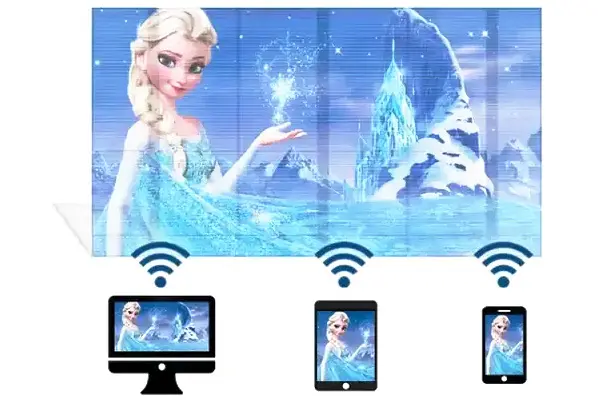
4. Power Efficiency
Some screens now use energy-efficient Common Cathode designs that can cut energy use by up to 30%. These may cost more upfront but offer substantial long-term savings.
📦 What Does a Typical LED Screen Setup Cost?
| Application Type | Screen Size | Pixel Pitch | Budget Range (USD) |
| Retail Display (Indoor) | 3m x 2m | P2.5 | $10,000 – $15,000 |
| Outdoor Billboard | 6m x 3m | P6 | $20,000 – $30,000 |
| Stadium Perimeter | 50m x 1m | P10 | $60,000 – $90,000 |
| TV Studio Wall | 4m x 2.5m | P1.2 | $45,000 – $60,000 |
| Mobile Stage LED Wall | 5m x 3m | Rental P3.9 | $18,000 – $25,000 |
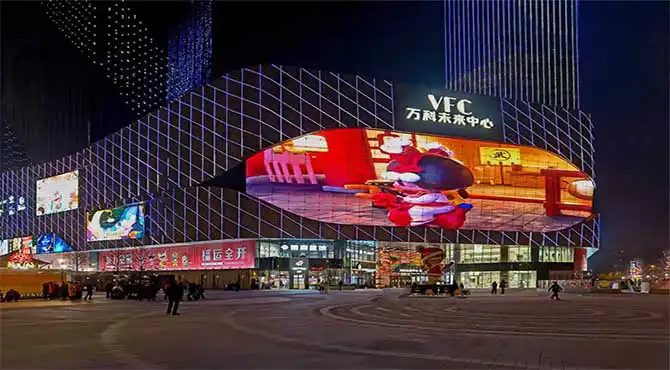
🏭 Real-World Examples and Use Cases
🔹 Retail: Adidas Flagship Store, NYC
Uses high-brightness P2.5 LED walls across product areas. Estimated cost: over $250,000 including installation and control systems.
🔹 Events: Coachella Music Festival
LED stage walls supplied by ROE Visual, using Black Pearl P2.8 rental panels with HDR support. Value exceeds $500,000 due to modularity, transport cases, and broadcast compatibility.
🔹 Corporate: Tencent HQ in China
Massive fine-pitch COB displays (P0.9) used for smart meeting systems and virtual conferencing. Cost estimated at $1,000 per panel due to extreme pixel density and AI-enhanced calibration.
♻️ Hidden Costs: What Happens After Installation?
✅ 1. Energy Consumption
A 10 sqm outdoor LED screen with 5,000 nits brightness can consume up to 10kWh per hour at peak. Over 8 hours a day, that’s nearly 3,000 kWh per year, or ~$400–$700 in energy costs—depending on local rates. Common Cathode systems or Smart Dimming can cut this dramatically.
✅ 2. Cooling and Maintenance
Heat is a real issue—especially for outdoor units. Choosing a screen with high-quality power supplies and good ventilation reduces maintenance and downtime.
✅ 3. Software Licensing and Calibration
Some advanced systems require periodic software updates or recalibration tools. Budgeting for long-term control system support avoids unpleasant surprises.
✅ 4. Regulatory and Environmental Compliance
- CE / UL / FCC certifications are often mandatory in public spaces.
- In Europe or California, e-waste disposal and energy efficiency certifications may carry additional fees.
- Custom enclosures to meet IP65/IP67 waterproofing ratings can add 10–15% to the cost.
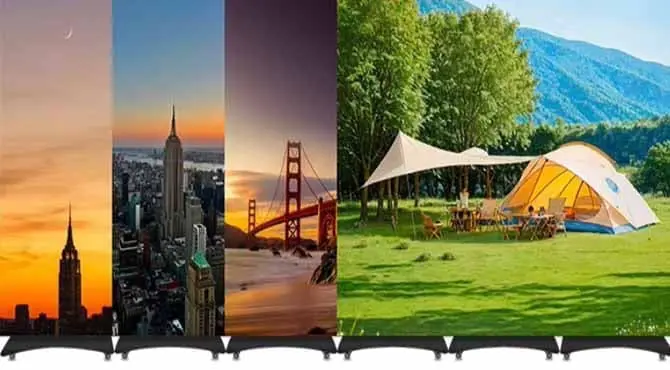
🔍 Frequently Asked Questions: What Buyers Want to Know
Q1: Why do two LED screens with the same size have completely different prices?
The price difference often comes down to pixel pitch, driver IC quality, brightness levels, and durability standards. For example, a P2.5 indoor screen using Nationstar LED chips and MBI5153 driver ICs will cost significantly more than a P4 screen with generic components, even if they’re the same size. Better materials mean better color, stability, and lifespan.
Q2: Is a fine-pitch LED screen worth the higher cost for indoor use?
Yes—especially if viewers are close to the screen. A fine-pitch screen (e.g., P1.2 or P1.5) offers superior image clarity and smoother text rendering. They’re ideal for conference rooms, control centers, or TV studios. While more expensive upfront, they enhance professionalism and audience engagement.
Q3: How much does installation add to the total cost?
Installation can account for 10% to 25% of the total cost, depending on factors like height, mounting structure, electrical rewiring, and whether the screen is indoor or outdoor. Complex installs—like curved screens or hanging rigs—require custom brackets and engineering, which increases labor fees.
Q4: Are there hidden costs I should plan for beyond purchase and installation?
Yes. You should consider electricity usage, maintenance (like pixel module replacement), cooling systems, software licensing, and compliance certifications (CE, UL, EMC). Over five years, these can equal up to 30% of the screen’s initial cost if not planned for.
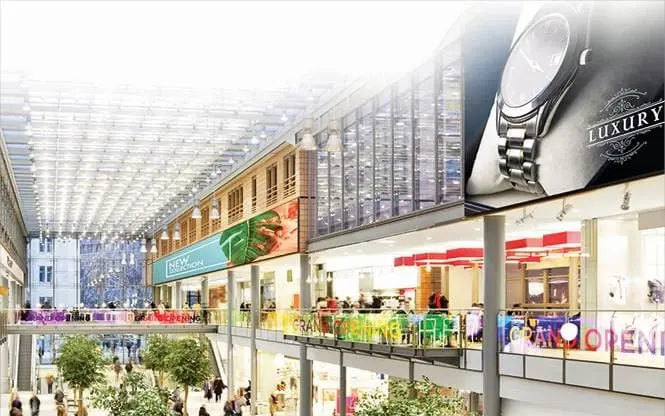
Q5: How long does an LED screen typically last?
A high-quality LED screen lasts 50,000 to 100,000 hours (roughly 5–10 years) with proper usage. Outdoor screens may wear faster due to weather and UV exposure, while indoor screens with stable temperature and lower brightness levels tend to last longer.
Q6: Is it better to buy from a local vendor or import from manufacturers (like in China)?
Both have pros and cons. Local vendors offer faster support, warranties, and installation services—but often at a higher price. Direct imports from China can save 20–40% on hardware, especially when buying in bulk. However, you must ensure the manufacturer meets quality standards and provides remote support or on-site technician options.
Q7: Why do two similar-looking screens have very different prices?
Because of differences in driver ICs, pixel pitch, structural materials, energy efficiency, brand reputation, and service support. Always ask for a detailed component list.
Q8: Is LED cheaper than LCD for large-scale video walls?
For small-scale indoor setups, LCD can still be cheaper. But for anything larger than 110 inches or anything used outdoors, LED becomes more cost-effective over time—especially in terms of brightness, scalability, and maintenance.
Q9: What’s the return on investment?
LED displays often pay off within 1–3 years through increased visibility, advertising revenue, or ticket sales—depending on your industry. Screens with higher energy efficiency can recoup costs even faster.
So, how much does an LED screen cost? It depends—but now you understand why. From driver ICs and laser assembly methods to energy consumption and environmental regulations, the price of an LED screen is a reflection of technology, reliability, and long-term value.
If you’re investing in a display that defines your space or business identity, it’s worth looking beyond the numbers. Quality components, reliable suppliers, and smart design choices can save money—and headaches—in the long run.









